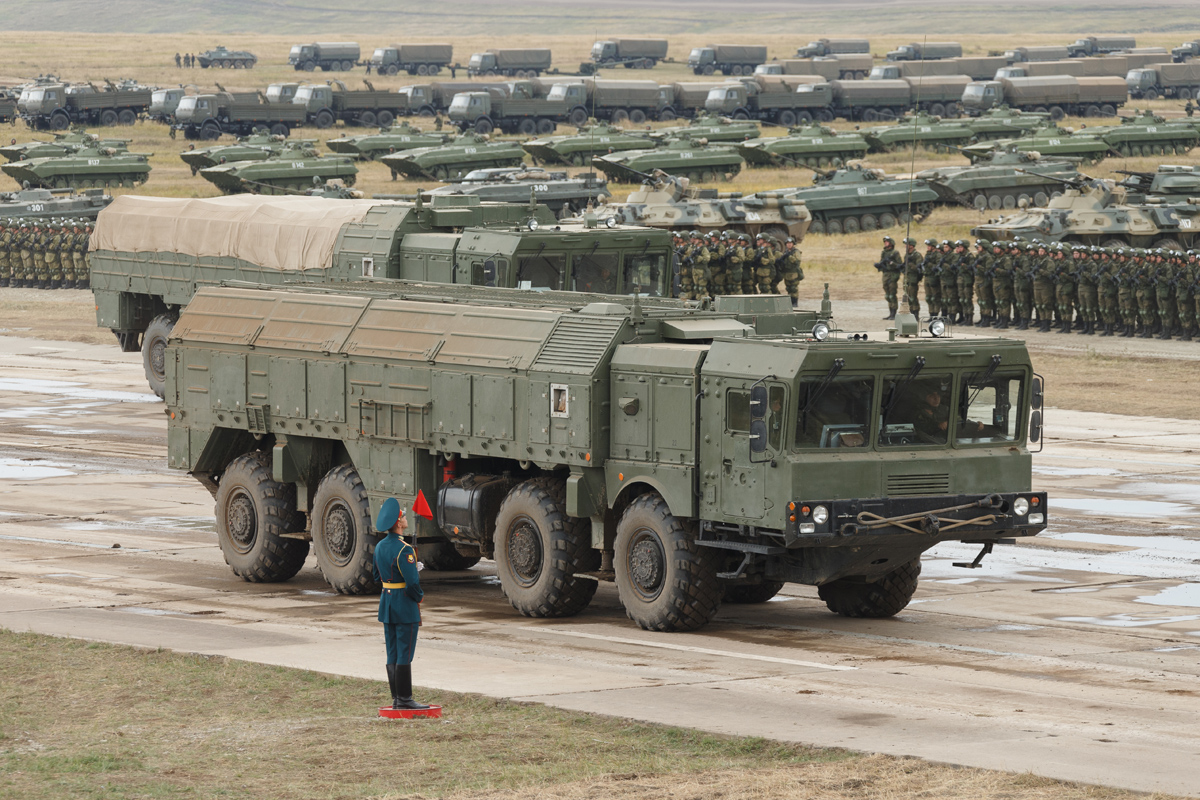Russia's Nuclear Posturing and Its Dangers

Now in its second year, the confrontation between Russia and Ukraine doesn't seem to be ending anytime soon. Russia's announcement earlier this month of intentions to hold drills imitating the use of tactical nuclear weapons close to the Ukrainian border was a recent and concerning development. This comes after Russia announced in March that it will station nuclear weapons in Belarus, raising fears throughout the world about Russia's nuclear posture during the battle.
A Change in Perception
- Russia uses aggressive remarks made by leaders of nations who back Ukraine to justify their measures. In particular, British Foreign Secretary David Cameron stated that Ukraine may utilize British long-range missiles to target Russia, while French President Emmanuel Macron made hints about sending soldiers to the country. Russia claims that these statements call for heightened nuclear preparedness.
- However, these justifications seem more like acts of brinkmanship and coercion rather than responses to existential threats. Macron and Cameron’s comments do not pose genuine survival threats to Russia that would warrant such an escalation. The actions taken by France and the U.K. are not direct threats to Russia’s existence, making Moscow's nuclear readiness claims appear exaggerated.
- Russia's nuclear threats may initially appear to be standard deterrent measures meant to stop Ukraine and its allies from interfering further. Nuclear-armed nations like North Korea have used similar strategies in response to threats from more powerful enemies. However, the current situation suggests that Russia's nuclear strategy may change significantly, possibly reducing the bar for the use of nuclear weapons. Should this tendency become commonplace, there may be significant repercussions.
The Development of Nuclear Disavowal
- The idea of nuclear deterrence was based on a number of fundamental ideas for many years after the end of the Cold War. The idea of mutually assured destruction (MAD), according to which the use of nuclear weapons would cause irreversible harm to all parties concerned, was central to these. Furthermore, it was believed that using nuclear weapons would only be a last resort in the event of an existential danger.
- Despite its severity, the battle in the Russia-Ukraine conflict does not directly threaten Russia's existence. However, Russia has shown that it is open to the idea of using nuclear weapons. In the past, Russian nuclear doctrine only permitted the first use of nuclear weapons in dire circumstances that endangered the country's existence. But in the current conflict, Russia has been able to bend and possibly even redefine these boundaries, pointing to a serious change in the fundamentals of nuclear deterrence.
The Perilous Example
- Russia is taking a risk by explicitly threatening nuclear war in less serious conflict scenarios. Should nuclear countries start routinely threatening to deploy nuclear force as a means of coercion in conventional conflicts, other governments might be encouraged to follow suit. This kind of approach could lead smaller nuclear-armed countries to think that threatening stronger conventional military enemies with nuclear weapons can be counterproductive.
- Nations with nuclear weapons, such as Iran and North Korea, may feel more confident in their ability to use them to deter escalation from rivals. Although Russia is unlikely to launch a tactical nuclear attack at this time, its nuclear posture creates a risky precedent. In this fight, the line between conventional and nuclear warfare is becoming increasingly hazy.
Effect on Disarmament and Non-Proliferation Initiatives
- The already precarious international non-proliferation and disarmament efforts are further jeopardized by Russia's nuclear posturing. The battle serves as a stark reminder of how vulnerable non-nuclear states are to nuclear-armed states' aggression, which could spur other countries to seek nuclear deterrent capabilities.
- It now appears that the Budapest Memorandum—which required Ukraine to give up its nuclear weapons in exchange for security guarantees from the United States, the United Kingdom, and Russia—was a miscalculation. The possible ramifications are illustrated by recent remarks made by Iran on a review of its nuclear doctrine in response to existential threats from Israel. Despite Iran's repeated claims that it has no intention of developing nuclear weapons, non-proliferation efforts are jeopardized by the possibility of policy changes in reaction to imagined threats.
- Because of these trends, other countries may be discouraged from seeking disarmament or giving up their nuclear weapons, thinking that they too may be threatened with nuclear aggression. For instance, North Korea may grow even more hesitant to surrender its nuclear weapons because it foresees possible weaknesses.
A New Nuclear Flashpoint Is Emerging
- A new nuclear flashpoint has been generated by the dynamics of the war between Russia and Ukraine. Russia has changed the conventional wisdom on nuclear deterrence by reducing the bar for using nuclear weapons. This modification emphasizes the asymmetric advantages that nuclear weapons can offer in conventional conflict, escalating concerns about their proliferation on a worldwide scale.
- Smaller nations may suddenly view nuclear weapons as crucial to their security in areas where tensions have existed for a long time. Greater nuclear instability can result from prioritizing active warfare over deterrence and proliferation over disarmament when the threat of nuclear war looms large over the battlefield.
In summary
Nuclear deterrence rules have undergone a dramatic and dangerous shift as a result of Russia's recent activities. Russia is establishing a precedent by reducing the bar for using nuclear weapons, which could have significant ramifications for international security. Decades of non-proliferation efforts are undercut by this trend, which also runs the risk of inciting other nuclear-armed governments to take similar stances. There is a growing blurring of the lines between nuclear and conventional conflict, which raises the risk of proliferation and instability.
